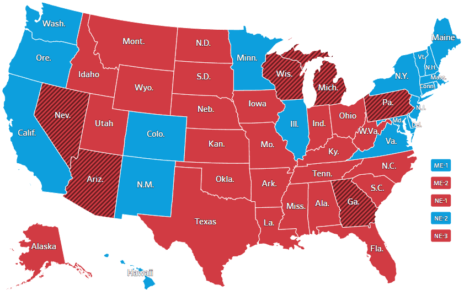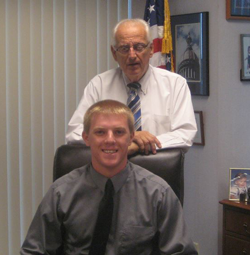Until Jan. 7, 2014 I have never left America. My 21 years of life and I had never left the country that I was born into, pretty crazy right? I have, however, been to Disney about 10 times which my bragging point was until now.
The trip was a part of a fulfillment for a course offered this semester by Dr. Rekha Datta. The class is an International Service Seminar where the students will apply the customs, politics, and various educational experiences learned from the trip into a classroom setting. This method is believed to be a strong one when trying to learn about a different country, especially one as complex as India.
Dr. Rekha Datta, professor of political science and instructor of the course said, “The goal of the trip to India was to offer an immersion experience to students and encourage community engagement through international service.”
India taught me a lot of valuable life lessons, some about travel and some about myself. I believe, however, the most important lesson that my experiences taught me is that no matter how much you read, study, and discuss a country or culture, you will never fully understand it until you experience it for yourself. There is a different type of education that comes from the actual experience of a culture, speaking with people, or working within the schools.
Calcutta
When we finally arrived to Calcutta, the time difference was ten and half hours ahead of the United States. By the time our plane landed, we got through immigration, and everyone claimed their baggage there was not a person in the group that could tell you what time, day, or date it was. Our professor met us at the gate and directed us onto a bus that was labeled with the word “TOURIST” in big letters on the front.
Everyone told me that when I got to India I would be culture shocked, and I always shook them off saying I knew what I was going into. This was the first time that I realized, it does not matter how much you think you know about something, you have to experience it firsthand. I was culture shocked (well, to a degree) it was what I expected, what studied, and what I knew about India, but it was still a different feeling to be emerged in it firsthand.
The bus took us to our first hotel, Hotel Casa Fortuna, which was located in the center of Calcutta on a busy highway street. The hotel was beautiful inside and collaborated with a very popular vegetarian restaurant that was located on its second floor. The employers were all very helpful (maybe overwhelmingly so) to the point you could not open your door without one standing there ready to ask if you needed assistance with something.
When we got to our rooms, we had about two hours to wash up and eat breakfast before our professor wanted us to get started on the day. Our first stop (and most of our time) in Calcutta was spent mainly with Loreto Day School working with the children who were part of the Rainbow Program.
Datta said, “Students got to see firsthand what children born into poverty, rescued from the streets, and the slums go through, how they overcome grave odds and are eager to receive an education, and how some individuals and schools such as the Loreto School in Calcutta through its Rainbow Program, are making a difference in the lives of abandoned children, trafficked girls, and those who have faced sexual and other kinds of violence at a tender age.”
Equal opportunity for education is a major issue in India. In an education forum with political science professors at the Institute for Social Science Research we were able to discuss the Right of Children to Free and Compulsory Education Act. This act means to provide more children the right to proper education, no matter what social class they happen to fall under. The Loreto Day School was already way ahead of the governmental legislature when they developed the Rainbow Program, giving the types of children that will be affected by the law the right to better education.
This law, however, puts the pressure on states and private schools to enroll the children. Private schools will now have to set aside a certain chunk of government aid to pay for children who come from lower incomes to attend their institutes.
The positive influence of such an education is clearly seen within the girls already a part of a program like the Rainbow Room. The Loreto girls were some of the most uplifting girls I have ever had the pleasure to know. They do not let their situations get them down; in fact they flourish under them, which is easily through how positive and smart each and every one was. They were all able to speak three languages-Bengali, English, and Hindi and tell us about their favorite subjects (almost none of them liked math).
Datta continued, “The students who went on the trip visited the children of the Rainbow program with understanding, respect, and friendship. Through their compassion, understanding, and care, in the spring semester, they will engage in service projects that will enhance their commitment to making a difference in the lives of those children. Throughout this semester, the students in the International Service Seminar class will design and implement projects to raise awareness and resources for the children as well as address policy issues pertaining to poverty and the role of education in local and global settings.”
We got to take an amazing tour through the city of Calcutta. The tour we took was the “Culture Kaleidoscope” which was a three hour walking tour through the different areas of the city. The tour took us through the vast amount of religions and cultures that are thriving among one another from Christianity, Buddhism, and Judaism to the historical infrastructure of Chinese settlements in Calcutta. Perhaps one of the best parts as well was, with the aid of Manjit, we got to try street food for the first (and sadly only) time on the trip. He took us to the places he knew we could eat, and gave us perhaps the best fruit cake and chai tea I have ever had.
We also had the pleasure to attend various educational forums throughout the trip.
The first was with the college, Shri Shkshayatan College where we were able to participate in a question and answer dialogue with the girls that attended there. Mainly it was them asking us questions and we answered about what it is like to go to college in America. It was interesting to see their perspective on how we live, which they mainly got from movies and television shows such as “Pretty Little Liars” or “Gossip Girl” (we all wish we could be Blaire Waldorf but sadly we cannot be). It was fun talking to them, and seeing how similar their experiences were to ours, or finding out the differences between the two.
Another forum was with an Environmental Organization that discussed the various projects they were working on in order to improve the environment in India. The discussion was in a small room, filled with people who were in charge of the company who spoke along with a PowerPoint of their various projects. One was to work on lowering the amount of auto rickshaw’s that were used in India at the moment. The rickshaws were apparently bad on gas and causing quite a problem. The rickshaws were everywhere on the streets, acting as little taxi like mobiles where people could be taken from one place to another.
Shantiniketan
After spending a lot of time in Calcutta, we headed to Shantiniketan. There was a major difference in the transfer from Calcutta, a major city, to Shantiniketan a quiet rural area of India. There were cows and pigs walking down the long dirt roads, and a cluster of stores every few miles from one another. However, Shantiniketan was famous for being the home of the one and only legend: Tagore.
Rabindranath Tagore was a famous poet and political influence in his time. To this day, he is still widely regarded as a legend in India culture. Tagore was a strong advocate for education, women’s rights, and advocate of India’s independence from Britain. He was the first non-European to win the Nobel Prize in 1913 for his remarkable work in poetry and music that are still highly influence and renowned today.
Shantiniketan happened to be the place where Tagore not only lived but also started his college, Visva-Bharati University. The campus was beautiful and unique, as it was filled with a variety of sculptures and is pieces done by the students.
Delhi
Our time in Shantiniketan was shortly spent, and we were soon on our way to Delhi. Delhi was different from Calcutta and Shantiniketan, as it appeared to be more developed.
Delhi, however is a historically filled city with a lot of site seeing to do. Beyond the beauty and cliché that is the Taj Mahal, there are a lot of military forts, various tombs, and temples to see, and we did not even see them all. We had tour guides to take us through the difference places who had our days planned down to the hour.
Datta said, “Our students adapted to challenges, demonstrated spirited engagement and cultural sensitivity, and extended their hands of friendship to children who are vulnerable, who have rarely seen anyone show any kindness toward them. That to me, is the greatest satisfaction that I got from the trip. It is one thing to come to know about street children and the poverty and harsh conditions they live in, by watching a film like ‘Slumdog Millionaire.’ It is quite another to get to visit them in reality. Our students cannot stop talking about the children, about social justice and global inequalities.”
Datta continued, “With what they saw during their visit, and through their caring and understanding, they intend to create projects and design programs, keeping in mind the dignity of the children, to make a difference, however small the efforts might be. When students demonstrate such engagement and passion to make a difference, that, to me, is the soul of any learning, not just of global education! And, of course, we all had a lot of fun on the trip, we bonded through shared joys, challenges, and memorable moments.”
PHOTO COURTESY of Katrina Boyle



